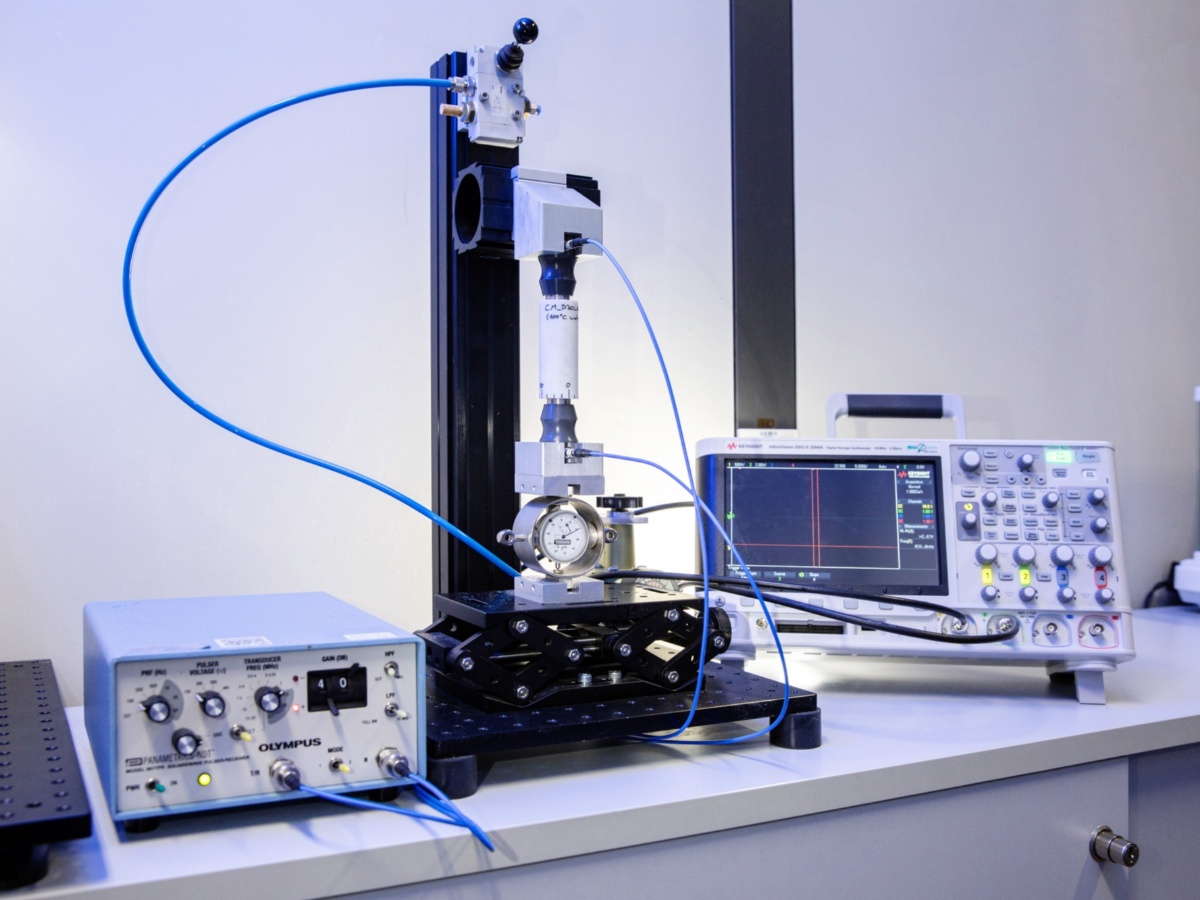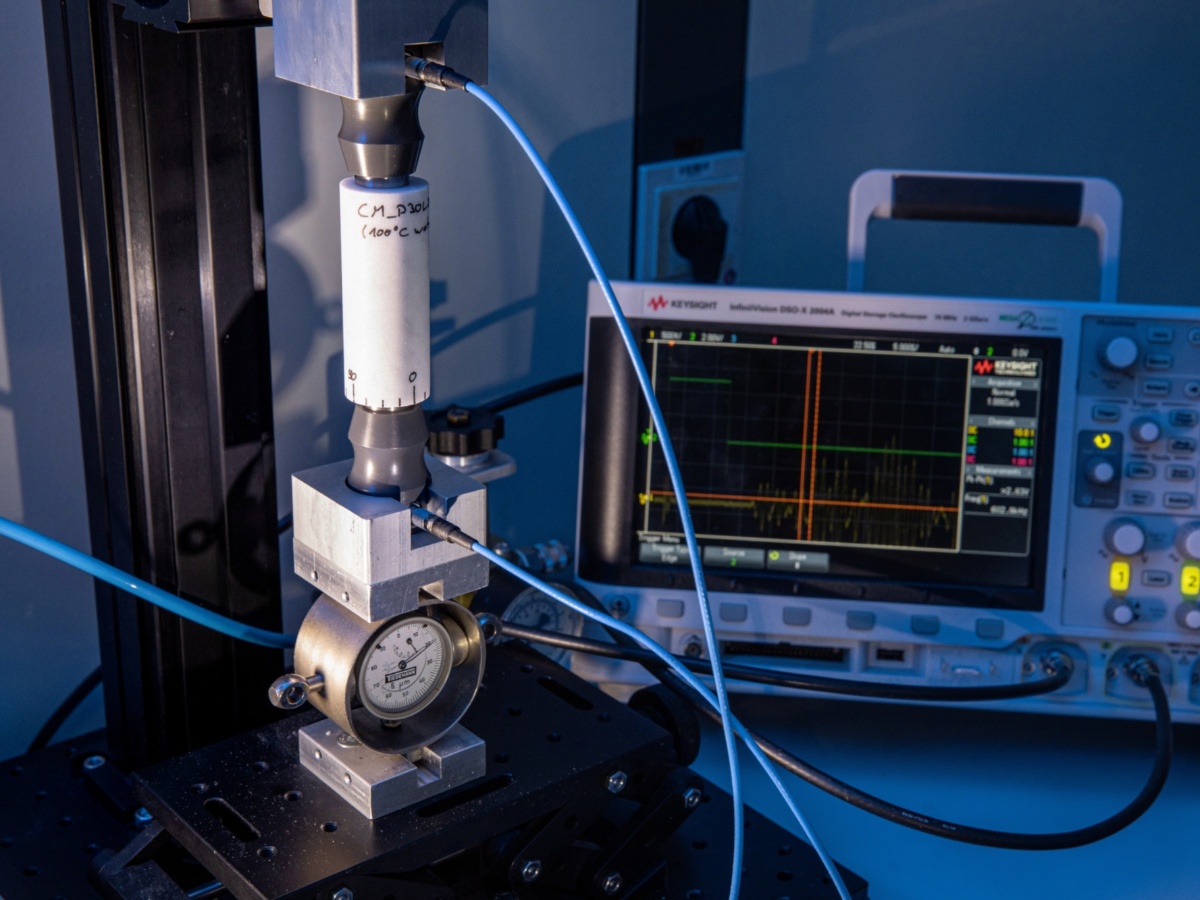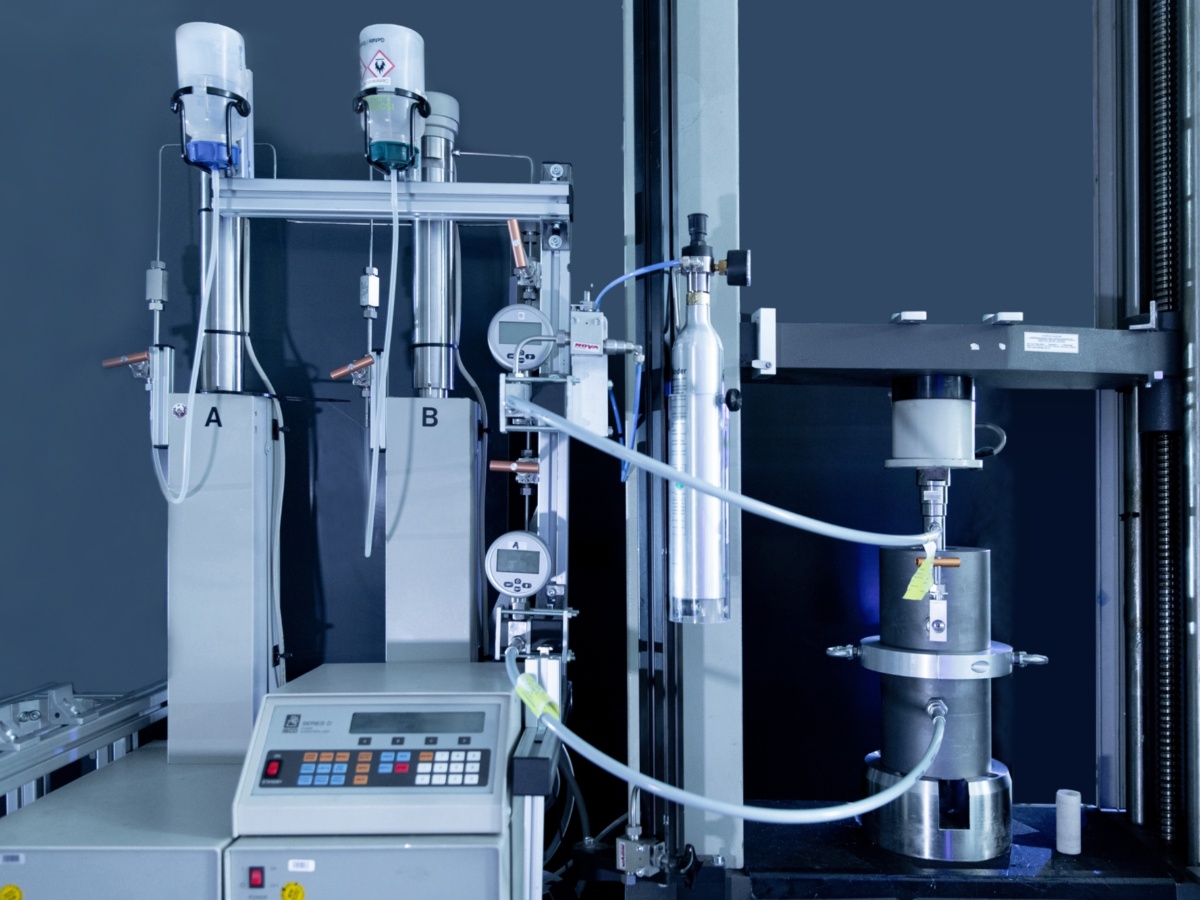Related Projects
About the Rock Physics Lab
The Rock Physics Lab is a collective term to reconcile different means of macroscopic characterization possibilities for rock specimens at the PML. It includes classical core-scale testing facilities like low-pressure triaxial cells (for soil or granular material samples with a diameter of 100 mm) equipped with low-frequency ultrasound transducers and high-pressure triaxial cells for rock cores (with diameters of 30 to 50 mm). Furthermore, low- and high-pressure syringe pumps (Teledyne ISCO 100DX) are integrated into the experimental workflow, whereby with the latter pumps, the pressure can be controlled up to 689 bar and the resolution of the flow rate can be adjusted between 0.01 µl/min and 50 ml/min. Away from this, static, quasi-static and dynamic triaxial setups can be adopted to two screw-driven universal testing devices (Schenk Trebel RM 50 and 100, refurbished with a digital DOLI EDC controller), where each device could be used in force and position control (axial force up to 65 kN in 0.1 N steps for force control or accuracy of 0.01 mm for position control). Currently, the high-pressure syringe pump and uniaxial device are combined and managed in a MATLAB script to perform a well controled and trackable experiment. The script-based control also provides an easy-tune environment for various workflows by applying simple commands. In addition, the recorded data during the experiment could be analyzed and accessed in real-time by an integrated database.
Publications
- Schepp, L. L., Ahrens, B., Balcewicz, M., Duda, M., Nehler, M., Osorno, M., Uribe, D., Steeb, H., Nigon, B., Stöckhert, F., Swanson, D. A., Siegert, M., Gurris, M., Saenger, E. H. (2020). Digital rock physics and laboratory considerations on a high-porosity volcanic rock: micro-XRCT data sets. DaRUS, V1. doi:10.18419/darus-680
- Lissa, S., Ruf, M., Steeb, H., Quintal, B. (2021). Digital rock physics applied to squirt flow. Geophysics, 86. doi:10.1190/geo2020-0731.1
- Schmidt, P., Steeb, H., Renner, J. (2021). Investigations into the opening of fractures during hydraulic testing using a hybrid-dimensional flow formulation. Environmental Earth Sciences (submitted). arXiv preprint:2103.14367
- Lissa, S., Ruf, M., Steeb, H., Quintal, B. (2021). Seismic moduli dispersion and attenuation obtained using Digital Rock Physics. EGU General Assembly 2021, EGU21-5887. doi:10.5194/egusphere-egu21-5887
- Schmidt, P., Jaust, A., Steeb, H., Schulte, M. (2021). Simulation of flow in deformable fractures using a quasi-Newton based partitioned coupling approach. Computational Geosciences (submitted). arXiv preprint:2104.05815
- Schepp, L. L., Ahrens, B., Balcewicz, M., Duda, M., Nehler, M., Osorno, M., Uribe, D., Steeb, H., Nigon, B., Stöckhert, F., Swanson, D. A., Siegert, M., Gurris, M., Saenger, E. H. (2020). Digital rock physics and laboratory considerations on a high-porosity volcanic rock. Scientific Reports, 10. doi:10.1038/s41598-020-62741-1
For further information please contact

Dongwon Lee
Dr.-Ing.Postdoc
[Image: Dongwon Lee]






